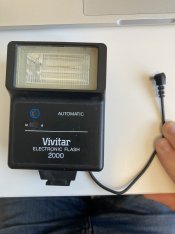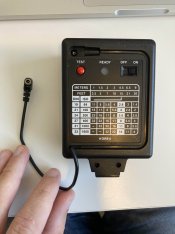Tom16
Member
Hello,
I've been using a Bronica GS-1 for the last 12 months and I was quite recently given a small Vivitar flash by someone as they were clearing their house. I didn't think it would work with the Bronica but I just wanted to check in case I am completely wrong. Here are a couple of photos of the flash.
Thanks!
Tom
I've been using a Bronica GS-1 for the last 12 months and I was quite recently given a small Vivitar flash by someone as they were clearing their house. I didn't think it would work with the Bronica but I just wanted to check in case I am completely wrong. Here are a couple of photos of the flash.
Thanks!
Tom







